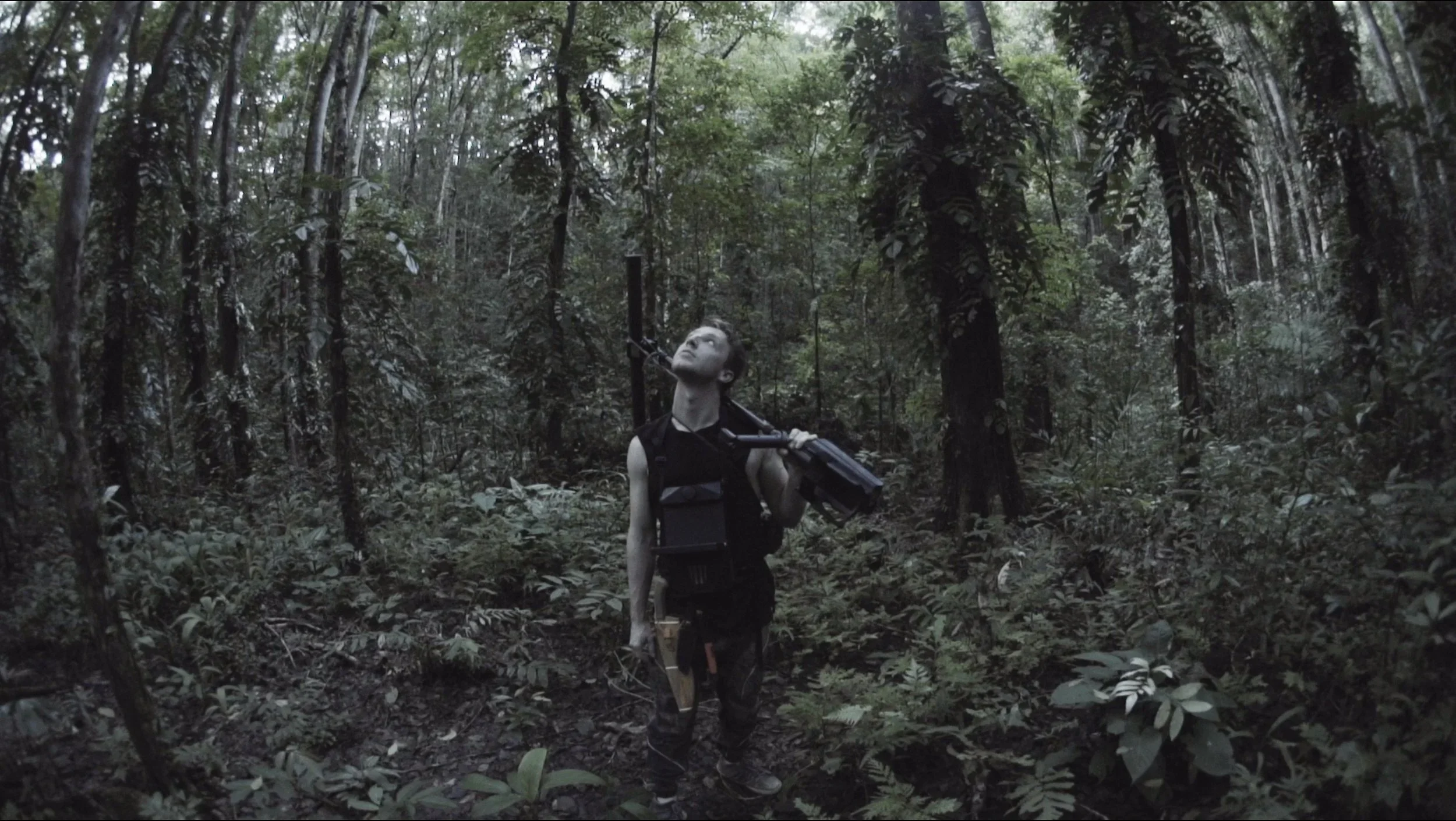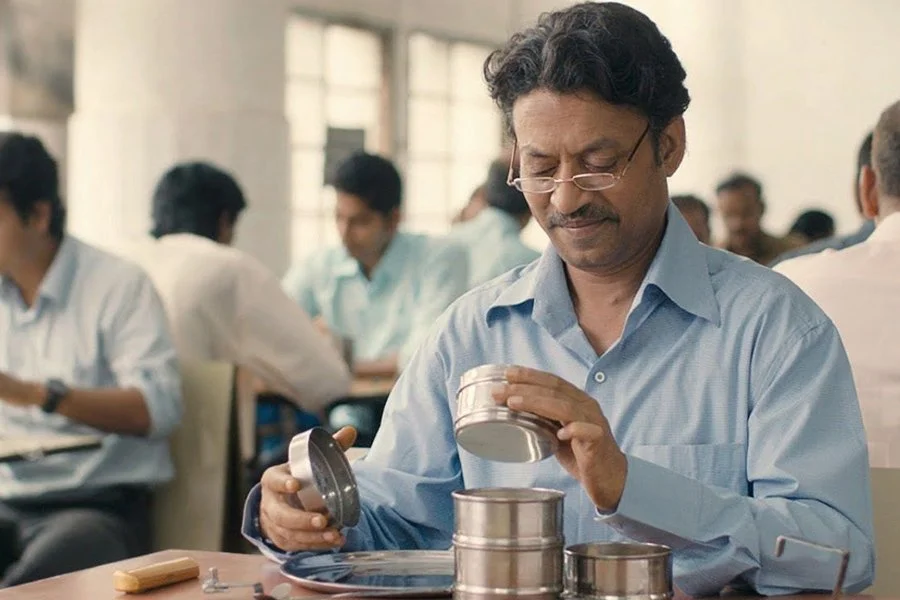‘Cinemalaya XXI Shorts’ OMNIBUS REVIEW
‘Cinemalaya XXI Shorts’ OMNIBUS REVIEW
Feature art by Abigail Manaluz
The Cinemalaya Philippine Independent Film Festival 2025 returns with a selection of new voices in the Short Film Category. It’s filled with stories, both old and new, that explore and experiment with narratives that have dominated the mass consciousness. The programming is more interested in dissecting how these narratives have shaped how we cope with the many problems in our country and our lived experiences living through hell, like the Philippines.
All ten short films selected bring out new perspectives and wild imaginations of our country, offering a new way of seeing things that are often left unheard and unseen. It is divided into two sets, the treatment of the materials functioning as coping mechanisms of the masses. Looking into how each short film is in conversation with the others is a wake-up call — how these narratives in society have evolved, shaped, and shifted into different forms of suppression.
Short films became a platform for emerging filmmakers to challenge conventional storytelling to bring the utmost personal truth in them. Here are the official reviews:
Film still from Please Keep This Copy
Please Keep This Copy
Dir. Miguel Lorenzo Peralta
“The personal is the political” was one of the key phrases I wrote a year ago when I declared Please Keep This Copy as the best Filipino film of 2024. Rewatching the film now on a larger screen made that core thesis more present and potent than ever. Originally meant to be called “Mementos,” every keepsake, scribble, ROTC manual test paper, origami heart, and drumstick was kept in the filmmaker’s visual arsenal to be the throughline of memories across his life in a Catholic high school; one that is underlined by the ever-present subtext of the post-2016 Duterte climate. But what punctuates that sense of groundedness is the utilization of Peralta’s recordings of his actual teachers and classmates. Thus, this documentary essentially makes the “document” aspect a very literal and fully realized aspect of the genre. And it only took 6 minutes to do that.
Every document has a purpose, which is why it resonates with me and many others, universally relating to its themes of repression, anti-authoritarianism, and self-discovery; it is its specificity. Every cut and foley Peralta lays out on the screen is him laying out his own hearts, fears, and desires. We see and feel hints of his coming out, the overwhelming anxiety of existing under oppressive fascism, and ultimately, a developing political consciousness. That is why it's important to watch Please Keep This Copy: it is a coming-of-age story where, for all of us, it is inextricably inseparable from the political world we live in. Growing up is political; existing is political. — Ian Cruz
Film still from Ascension from the Office Cubicle
Ascension from the Office Cubicle
Dir. Hannah Silvestre
In Ascension from the Office Cubicle, director Hannah Silvestre taps into the life-draining, soul-sucking nature of office work and playfully explores the form of escapism some resort to from their dreadful existence, which in the film's case: developing a severe gambling addiction and a parasocial relationship with the lottery draw's host.
The film's commentary is sharp and funny. In addition to its relatability, the short film is a guaranteed crowd-pleaser. Its execution, however, does bear comparison to two Sonny Calvento's shorts, Excuse Me, Miss, Miss, Miss and Primetime Mother, and Sam Manacsa's Cross My Heart, Hope to Die, with the latter two films mentioned also competing in last year's edition of Cinemalaya.
It's not that Calvento owns said surrealist way of filmmaking, nor is Manacsa the only director that can do the depiction of everyday lives of ordinary workers justice; it's just that the homages are noticeable in many sequences if you have watched these films prior. While the final product of the film is polished and entertaining, in the myriad of short films choosing to depict the lives of workers in a surrealist lens, it may leave you wondering what the edge of Silvestre's film is out of the rest. — Abigail Manaluz
Film still from Hasang
Hasang
Dir. Daniel de la Cruz
Many of us have, at some point, entertained the question, “If I die, what animal would I like to be reincarnated as?” It’s nothing but a silly thought experiment… until you think deeper and realize there’s a heavier, more existential question worth pondering: Glug glug glug glug glug glug glug glug glug? (Will there still be a home left for us in this world if we ever return?)
In Daniel De la Cruz’s Hasang, people return to nature by transforming into animals of their choice after death. But where would they even go when the rivers have dried up, the trees have been cut down, and the heat is too much for life to survive?
Magical realism and absurdist humor are wittily used in this melancholic tale of grief — specifically, the grief of losing our beautiful world to environmental degradation. It centers on a young boy trying to help his grandmother fulfill her wish to become a tilapia. Filmmaker De la Cruz has this remarkable confidence often found among regional filmmakers, turning limitations into imagination as he experiments with images and sound to portray a sunlit world (perhaps even too sunlit that we can almost feel its heat through the screen) that is alarmingly slipping away.
When his lola finally transforms into an animal of her choice, it’s already too late. His grandparents belong to the older generation. They’re the ones who have witnessed the slow decay of the world and its environment, while the younger generation, like himself, inherits what is already damaged and is still breaking. In the end, all the boy can do is apologize — a closing line as heartbreaking as it is unnerving. — Linus Masandag
Film still from Radikals
Radikals
Dir. Arvin Belarmino
Set deep in Cavite's dance and culture, Radikals feels instantly familiar to me as I see bits of my own experience on screen. Rooted in performing the bakte, a harvest dance that’s both communal and competitive, the film follows a dance troupe preparing for a dance battle and moves like the province itself: loud, proud, and raw. Even the inclusion of Carmelo’s, a famous hangout spot in Cavite, gives it a sense of authenticity that locals will immediately recognize.
While the cast’s acting chops are solid across the board, what’s divisive is how Radikals turns local subculture into myth. The ending — strange, mucosal, almost The Substance-like — left many puzzled, myself included. After much thought, I figured it must be a Cronenbergian embodiment of that saying we have in Cavite: “We don’t die, we multiply.” Whether the troupe’s weakest member truly transforms or not (the chicken with his tattoo suggests otherwise), the film lingers as a metaphor for resilience, that even after we fall, we emerge, multiplied in new forms. It's wack. It's Etivac. — Arri Salvador
Film still from The Next 24 Hours
The Next 24 Hours
Dir. Carl Joseph Papa
Sexual assault will always be a tricky subject to address, for you have to know what to depict on screen to be respectful rather than exploitative. Carl Joseph Papa's previous film, Iti Mapukpukaw, handled the theme very well, so it is no surprise to me that The Next 24 Hours also turned out to be a realistic, sympathetic film that revolves around the theme, even more straightforward than Papa’s previous award-winning feature-length film, up until its ending.
The film's synopsis does remind me of Suzanne Miller's one-woman play Prima Facie, where it also followed the messy aftermath of an assault. While Prima Facie also delved into the legal proceedings regarding the assault, the timeline of Papa's short film only spanned the hours after the assault. Both characters in the respective stories were, at first, confused, numb, and afraid. They slowly take matters of their assault by doing the process of reaching the right authorities; however, the system fails them as we, as a society, made rules about what constitutes assault and what does not. These rules are dated and never really protect the very people it is supposed to protect.
The film does leave us in a cliffhanger, which is both violent and terrifying. The choice to end the film on that note is somehow problematic and irresponsible. I think Papa and the crew only meant good intentions and meant to break the stigma as the main character slowly built up the courage to seek help not only to the authorities but also to people close to her, despite the frightening possibility of being judged harshly. However, the execution of these intentions may trigger traumatic events for victims that can only harm them rather than empower them. — Abigail Manaluz
Film still from Kay Basta Angkarabo Yay Bagay Ibat Ha Langit
Kay Basta Angkarabo Yay Bagay Ibat Ha Langit
Dir. Maria Estela Paiso
Throughout the years, I have been drawn to the idea that no matter how familiar we are with different stories in the world we live in, how a person sees and tells these narratives is what makes them special. China's bullying tactics on Filipino fishermen and the Philippine Navy in the West Philippine Sea (WPS) have been an ongoing problem for a long time now, and there is no sign of it being resolved any time soon. The media's role in these matters is not only to tell the basic facts and supporting details, but also to provide the human factor behind the data: individuals’ honest reflections on how we are affected by these circumstances.
In Maria Estela Paiso's latest short, Kay Basta Angkarabo Yay Bagay Ibat Ha Langit (Objects Do Not Randomly Fall from the Sky), she likens the resilience of Filipinos in the WPS to schools of fish. No matter how much the tide submerges them, the typhoons try to sweep them away, or the Chinese coast guard blasts them with water cannons, they don't drown. That may seem admirable, but Paiso interrogates whether or not we should only let our fishermen and the Navy tolerate such perils.
Why float when we can teach ourselves to swim? Why lie dormant when we could send waves crashing against the current?
Paiso then demonstrates that defiance may not be as straightforward as one might think. As both the fishermen and the Navy face the dangers of the seas, those on top say their piece: support for the affected; a threat for the abusers, while also shaking their hands in the next moment. All empty statements trying to appease the storm while nothing changes for the better. And the film makes sure that you know who is responsible for this mess, and why progress remains stagnant.
Similar to her previous pandemic-themed short, Ampangabagat nin talakba ha likol (It's Raining Frogs Outside), Paiso captures the intensity of the situation with playful resistance against filmmaking conventions, while still evoking a boisterous sense of displeasure in the current state of our country. Her films always maintain a distinct creative vision, one that makes use of limited resources to conjure sounds and images that go beyond their limits. The craftsmanship on display is as resourceful, courageous, and hopeful as the people it casts a spotlight on. And although this film may amount to just “a single drop in this limitless ocean, what is an ocean but a multitude of drops.” — Justin Caunan
Film still Kung Tugnaw Ang Kaidalaman Sang Lawod
Kung Tugnaw Ang Kaidalaman Sang Lawod
Dir. Seth Andrew Blanca
When comparing Seth Andrew Blanca’s Kung Tugnaw ang Kaidalman Sang Lawod (Cold as the Ocean Runs Deep) to other films dealing with the experiences of Overseas Filipino Workers abroad, it immediately stands out. It is one of the rare films to depict the lives of Filipino seafarers during their line of work, and Blanca takes advantage of being a seafarer himself by shooting the film aboard an actual ship during one of his months-long voyages.
This decision creates a layer of commitment and authenticity to its portrayal of the everyday realities of seafaring that is hard to dispute, but the film goes even further by twisting the underdiscussed stories of abuse, depression, and isolation that Filipino seafarers often face into an eerie slice of analog horror.
In telling the story of a Filipino seafarer whose constant hounding of his girlfriend to send money back home pushes him into the hands of his superior with nefarious ulterior motives, Blanca brilliantly lays out the lead’s troubled psyche through clever filmmaking afforded by his unique shooting conditions. The ship’s massive structures engulf the people working on the ship, while its cold interiors and the seemingly endless expanse of the ocean horizon leave them with nowhere else to go.
The roaring engine and the crashing waves make it hard to find any respite from the constant monotony and confinement. Faces are always obscured: hidden in the shadows, covered by uniform, far away for the audience to see, or just simply out of frame. Silhouettes or tight shots of the body are how we recognize which characters are onscreen. It all adds up to an overwhelmingly heavy atmosphere, buoyed by the lack of visual fidelity created by Blanca’s decision to shoot the whole film with his phone.
It also attempts to mine psychological horror out of the seafarer’s debilitating mental state, as he is haunted by a shadowy figure without a face, taunting him in the darkness. Yet this aspect of the film is undercooked, a somewhat unnecessary inclusion when the rest of the film conveys the same ideas and emotions even without it. Kung Tugnaw ang Kaidalman Sang Lawod uses an enormous marine vessel in the middle of the ocean as the stage for an unsettling capitalist nightmare wrought by our country's colonial history, where Filipinos are ripped from their communities, while their humanity is stripped away as their bodies are rendered with maximum importance for the value extracted from them. The resulting seclusion from oneself and others makes them easy to prey on, their pain can barely be heard adrift the unwelcoming high seas. — Kieff Iporac
Film still from Figat
Figat
Dir. Handiong Kapuno
Today’s generations’ lifestyle has intersected with technology and popular culture, which has caused them to be distracted from the simple beauty of their environments. These also apply to indigenous people communities, where their cultures have also struggled to fade from those problems, as mentioned earlier, that the current generation of their communities is currently facing. Handiong Kapuno’s Figat offers hope that there is life that is still connected with their ancestral heritage.
What made Ching’ay stand out is that she is never ashamed of her roots, and she simply found content and satisfaction with the sounds and looks of nature, while the other children have their eyes glued to their phones. She seldom complains about her living conditions, such as how brownouts are occurring in their area and how she has to walk miles to travel to school every day. It all started with the need to bring a musical instrument to class, but what the education institutes expected were modern instruments that are commonly seen in popular culture.
She was inspired by the sounds she heard from her environment, which initially made her want to create an instrument out of bamboo to replicate those sounds. Ching’ay tried to conform using their family’s guitar, but it was broken since it had no strings. Ching’ay even teaches Gu-ay the song they performed in class with their handmade instrument. Kapuno suggests that there is still life connecting with and in honor of one’s cultural roots and nature to their ancestral heritage.
Figat hopes that there are many Ching-ays who always carry their ancestors’ culture with pride. The way Ching-ay prides herself in her culture shows the need for preservation, as it is her identity as well. Despite being marginalized communities, they found strength in their ancestral heritage. Honoring by simply imagining a life still connected with one’s traditions. — Christ Dustly Go Tan
Film still from Water Sports
Water Sports
Dir. Whammy Alcazaren
Most stories have framed climate change as a problem and usually end with a hopeful glimpse of the future through collective action in the present and changing the very systems that cause havoc on the environment. But what if people just choose not to care about the dying world and continue to live their last moments amidst the inevitable end? Whammy Alcazaren’s Water Sports satires this inevitability of the impending end of the world through the resilience of their love for the two main characters, Jelson and Ipe.
It’s a nihilistic take on the climate crisis. The characters are too concerned with living their everyday struggles, filled with flirtatious jokes as well as questionable school programs that were supposed to address or try to mitigate the rising heat. But they tried to cope with it through any means necessary, and what is accessible to them, even in just plain innocent homoerotic desires or simple romantic pursuits with each other. Alcazaren suggests that love might be the driver to stay resilient in these troubled times.
Water Sports doesn’t hold back in portraying this anxiety of the future. Visual imagery of burning and melting bodies and a tsunami incoming encapsulates that doom. It either tries to scare people through the climate crisis or tries to comfort them that living life with fulfillment and with love is still okay. People choosing to be selfish is a choice, but there are circumstances where they just can’t stand up like other people who are protesting and voicing their concerns about the future. In the end, whether the world can be saved or not, life should still be worth living for. — Christ Dustly Go Tan
Film still from I’m Best Left Inside My Head
I’m Best Left Inside My Head
Dir. Elian Idioma
The fun thing about watching a set of short films in a film festival is that you'll never know what you're going to get. Elian Idioma's I'm Best Left Inside My Head came as a welcome surprise, because I wasn't expecting a quirky claymation short in the line-up. Even more unexpected is how deceptively innocent the film is as it unfolds and turns into a grisly nightmare.
Produced as his thesis film, I'm Best Left Inside My Head explores the “silly anxiety” and guilt the Mapuan graduate has experienced as a filmmaker who came from a privileged background and tried to navigate the world with this self-awareness. The film follows Alec Dominguez, an accomplished adoptive son of gay philanthropists who returned to the orphanage he had once lived in to reunite with his childhood friends. What started as a heartfelt and nostalgic reunion becomes a heated interrogation rooted in resentment.
For his friends, Alec Dominguez — a partial self-insert — has all that they don't have: talents, dreams, family, finances. In short, the ideal life that an orphan expects themself to have once adopted. Through these characters, Idioma personifies the voices in his head; the inner critics spouting shame and rage at him for having something to complain about. That rage turns into violent self-loathing.
In Idioma's film, guilt is a gnawing parasite that grows like an insistent fungus the more it feeds. And the more it spreads, the more convinced the host is of the necessity to destroy himself for having a life he doesn't deserve. There is no simple remedy to make it all stop. But give it time and some friends, maybe, just maybe, your whole heart will finally accept the cards you're handed with and make the best deals out of ‘em. —Justin Caunan




























